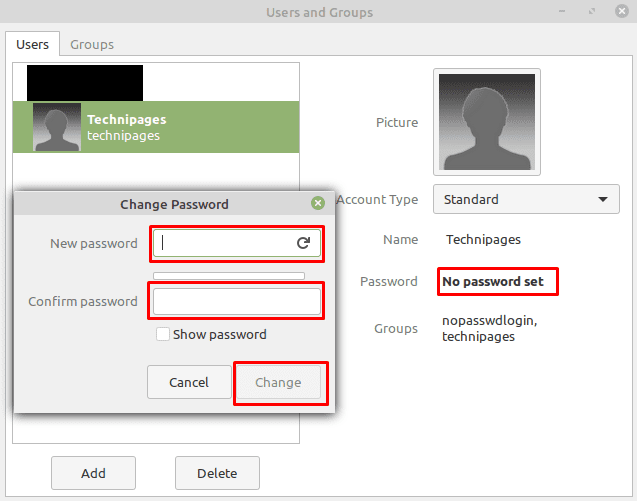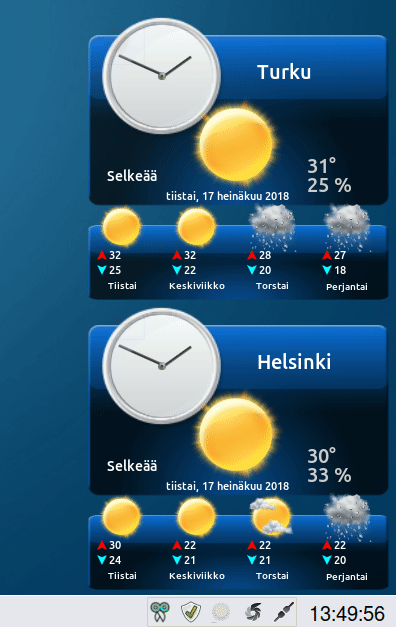

within the preferences control, the Display tab shown here presents the general characteristics of the panel. Here it shows 'Panel 0', and you can simply click on that name in the drop-down list to get any others. The first thing to know about this control is that it gives you access to all of the panels, no matter how many there are and no matter which one you right-clicked to get to it. Panels are controlled and configured using a different utility, 'Panel Preferences', which is also located in the 'Settings' menu, or can be accessed by right-clicking anywhere on the panel and choosing 'Panel' and then 'Panel Preferences'. Maybe I am starting to see a little bit of light here.Īs shown in the screen shot above, the Manjaro Xfce desktop has one panel which spans the bottom of the screen. One word of warning about removable devices, if you remove the icons for them then you will have to go through the file manager to unmount them, and if you have already removed both file manager icons you will have to go through the application menus to get to the file manager to get to the removable devices. So if you are old and cranky like me, and you don't want all of that cruft on your desktop, you can remove any or all of it by de-selecting the items in the 'Default Icons' list. In fact even on this little N150+ there would be 10 more icons on the desktop for additional disk partitions. Unfortunately for me, disk partitions count as removable devices, so when you have a lot of partitions (for a lot of different Linux distributions) the desktop can get rather cluttered with them. Xfce also dynamically displays icons for any 'Removable Devices' which may be connected. The same is actually true of the Trash icon, many/most desktops include it, and I think I can honestly say that I have never, ever clicked on it (intentionally) in 20 years of using Linux. I mean, even one of those is too much for me, but both of them, when they differ by only one click when either one is opened? Must be some kind of historical thing that a lot of users expect. It's never been clear to me why you would want file manager icons for both File System and Home on the desktop. By default Xfce displays the three icons shown in the screen shot above. The part which interests me here is the 'Default Icons' list at the bottom of the window. The other item that is of interest right now is the 'Icons' tab.

In fact, I have a colleague who still uses one (and it has a little ball sticking out the bottom, really). but there are a lot of us (mostly with grey hair) who used 3-button mice for many years.
#Adding desklets mate mac
Yeah, I know, all the Windows users are saying "what? middle? I've only got left and right mouse buttons", and all the Mac users are saying "an N-button mouse has N-1 too many buttons". If for some reason that I can't think of right now you don't want this kind of direct access to the application menu, you can disable it.Īlso in the Menus tab is an item which I personally think shows Xfce's long heritage, because it is an action triggered by a middle mouse button click. You might not realize how nice that really is until you have used it for a few minutes. This means you don't have to go to the bottom or top panel and click something, you don't have to slam the mouse cursor into the top left corner of the screen, you can start an application from anywhere on the screen that you can see a bit of desktop wallpaper. When you right-click on the Xfce desktop you get the menu shown here, and if you have the 'Desktop Menu' option selected here, the last item in that menu will be a cascading Applications menu.
#Adding desklets mate free
There will certainly be people who know a lot more than I do about every one of the desktops I discuss, so if you have other good tips, advice and/or preferences, feel free to speak up in the comments.
#Adding desklets mate series
What I am going to present in this series are my own experiences, and my own preferences and procedures. That, in turn, means that I have had to actually work on each of those different desktops, and in most cases I have learned enough about configuration and customization to create a comfortable environment for myself.

When I load a distribution, I generally choose whatever the 'preferred' desktop for that distribution is - that means KDE on openSuSE, Gnome on Fedora and Debian, Cinnamon and MATE on Linux Mint, Xfce on Manjaro, and so on. I have quite a few laptops, notebooks and netbooks and I have a number of different Linux distributions loaded on each of those. I will start this post with a disclaimer: I do not claim to be an expert on Linux desktops in any way, or by any stretch of the imagination.


 0 kommentar(er)
0 kommentar(er)
